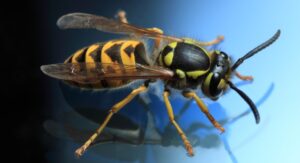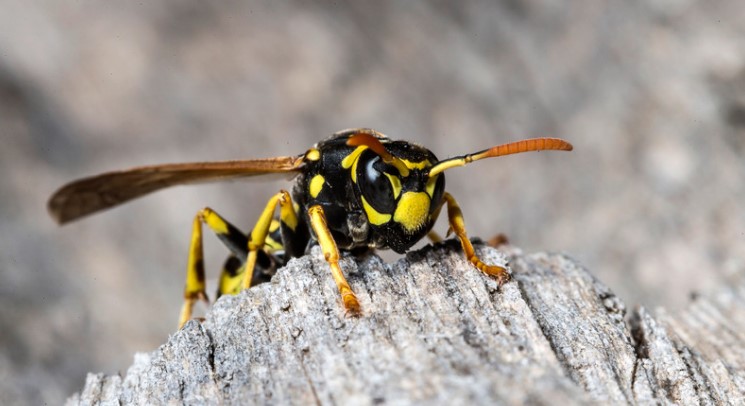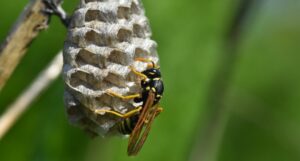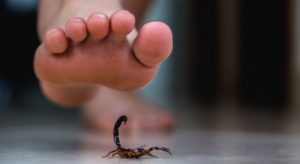When it comes to flying insects, it’s essential to distinguish between friendly pollinators like hoverflies and potentially aggressive pests like wasps. Understanding the differences between these two insects can help you protect your garden, promote biodiversity, and ensure a safe environment for yourself and your family. In this blog, we will explain the major difference between wasps and hoverflies and how to identify them correctly.
Difference Between Wasp and Hoverfly
Understanding the differences between wasps and hoverflies is crucial for effective pest control and maintaining a balanced ecosystem in your garden. We can differentiate them in terms of physical characteristics, diet, and nesting behaviour. Let’s see the differences one by one.
Physical Characteristics
Wasp

- Wasps are typically larger and more robust in size compared to hoverflies.
- They have distinct black and yellow stripes on their bodies, which serve as a warning signal for potential predators.
- Wasps have smooth bodies and a defined narrow waist, giving them a sleek appearance.
Hoverfly
- Hoverflies are smaller and more delicate than wasps, often resembling bees in size.
- They have a distinctive black and yellow pattern on their bodies, mimicking the appearance of stinging insects, for protection.
- Hoverflies have a wider, rounder body shape compared to the slender waist of wasps.
Behaviour and Diet
Wasp
- Wasps are predators and scavengers, feeding on other insects, nectar, and sugary substances.
- They can become aggressive when threatened, especially around their nests, and may sting multiple times in defense.
- Wasps play a role in controlling pest populations but can also be a nuisance in residential areas.
Hoverfly
- Hoverflies are harmless pollinators that feed on nectar and pollen from flowers.
- They are valuable allies in the garden, helping to pollinate plants and control aphid populations by consuming them.
- Hoverflies are docile insects that mimic the appearance of stinging insects for protection but do not possess a stinger themselves.
Nesting Behaviour
Wasp
- Wasps build paper-like nests from chewed wood fibres mixed with saliva. They are often found in sheltered areas such as eaves, attics, or tree branches.
- Their nests can contain hundreds to thousands of individuals, depending on the species.
- It is crucial to exercise caution around wasp nests to avoid provoking defensive behaviour.
Hoverfly
- Hoverflies do not build nests like wasps; instead, they lay eggs near aphid colonies to provide food for their larvae.
- The larvae of hoverflies are voracious predators of aphids, making them beneficial for natural pest control in gardens.
- Since hoverflies do not form large colonies or exhibit aggressive behaviour, they pose no threat to humans and can be welcomed into outdoor spaces.
Conclusion
While wasps and hoverflies may share similar appearances, understanding their differences in physical characteristics, behaviour, and nesting habits can help with effective pest control. If you cannot identify an insect and want to get rid of it from your garden or personal, call pest control services to eliminate it effectively.







